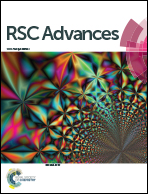Strong interfacial interactions induced a large reduction in lateral thermal conductivity of transition-metal dichalcogenide superlattices
Abstract
van der Waals heterostructures formed by vertically stacking two-dimensional (2D) crystals can not only harness the already fascinating properties of their constituent monolayers but also extend them due to the coupled interlayer interactions. With their emerged interlayer and intralayer excitons, 2D transition metal dichalcogenides (TDMC) crystals and their heterostructures have drawn growing attention for the applications of nanoelectronics, optoelectronics and nanophotonics. Yet, there are few studies on how interlayer and interfacial interactions influence the thermal transport in TDMC heterostructures which is critical for heat management. In this work, we investigate the lateral and out-of-the-plane thermal conductivity (κ) of four prototype TDMC heterostructures (bilayer MoS2 and WS2, heterobilayer MoS2/WS2 and superlattice MoS2/WS2) by solving the phonon Boltzmann transport equation from first-principles. The calculated room-temperature lateral κ of bilayer MoS2 and WS2 are 61.13 W m−1 K−1 and 87.52 W m−1 K−1, respectively, in reasonable agreement with literature experiments. The weak interlayer interactions in the heterobilayer MoS2/WS2 help preserve the high lateral thermal transport (70.01 W m−1 K−1) of its constituent monolayer. In the superlattice MoS2/WS2, there exist strong interlayer and interfacial interactions between the alternating MoS2 and WS2 monolayer which reduce the lateral κ to be 7.22 W m−1 K−1 by a factor of 10. The greatly reduced lateral κ of the superlattice mainly arises from the low phonon relaxation time, which indicates the existence of strong interfacial anharmonic phonon scattering. This work aims at uncovering the physics of emerged thermal transport properties in TDMC heterostructures and helps advance their applications in heat management among nanoelectronics and optoelectronics.



 Please wait while we load your content...
Please wait while we load your content...